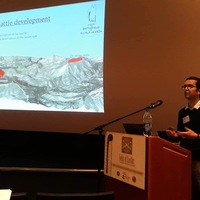
C. Leon Harris
C. Leon Harris taught biology, conducted research in neuroscience, and authored books on evolution, physiology, and zoology until his retirement. Since then his primary interest has been the Revolutionary War in the South.
less
Related Authors
Steven L. Ossad
Wesleyan University
Mario Ramirez Galan
Universidad de Alcala
Brooke Bobincheck
Virginia Commonwealth University
Rita Elliott
The LAMAR Institute, Inc.
Daniel Elliott-esquire
The LAMAR Institute, Inc.










Uploads
Papers by C. Leon Harris